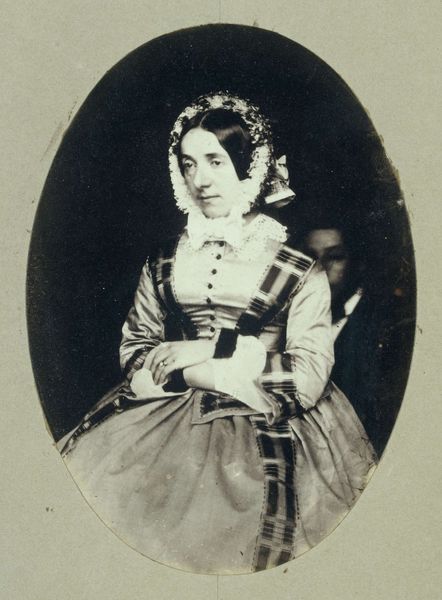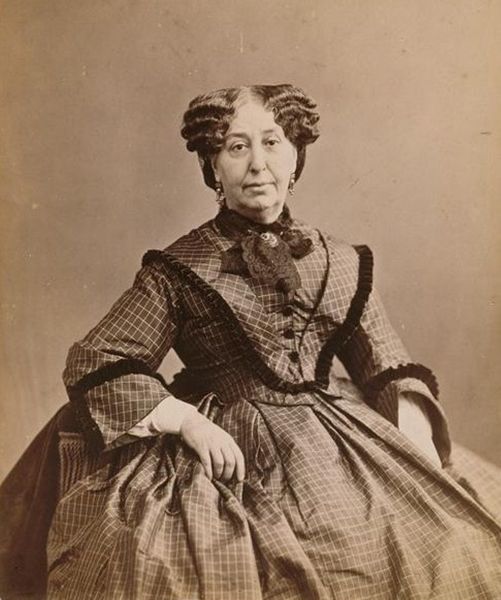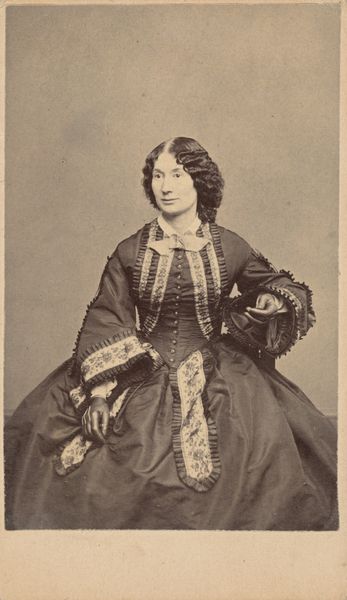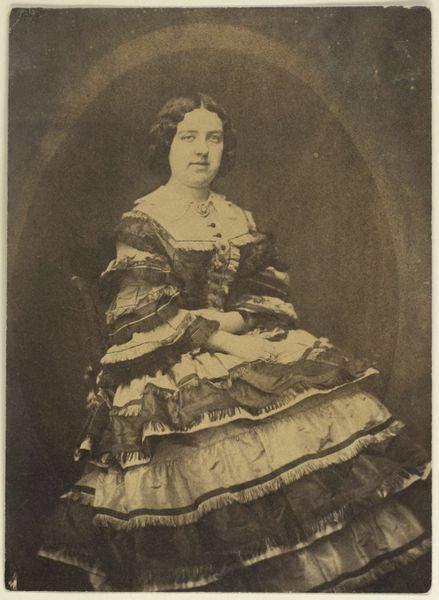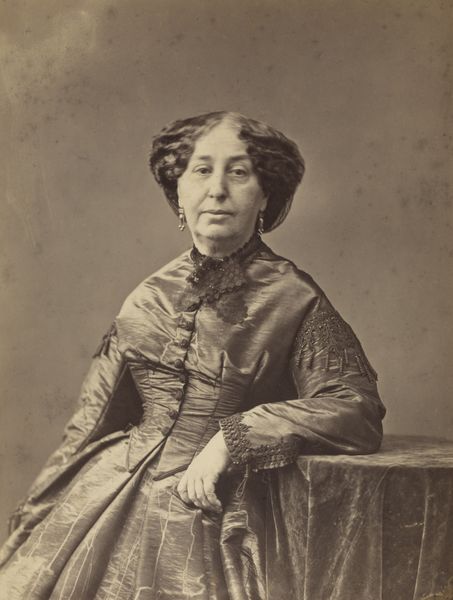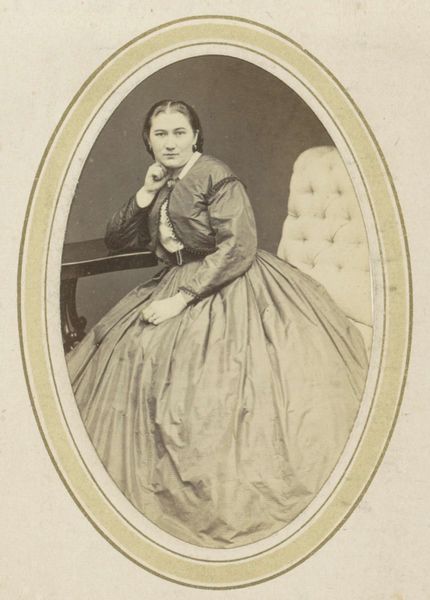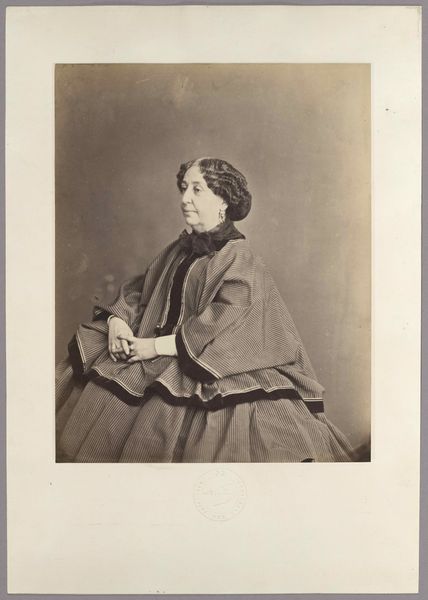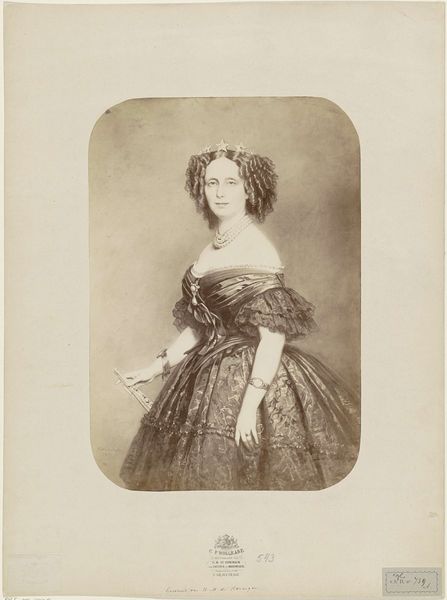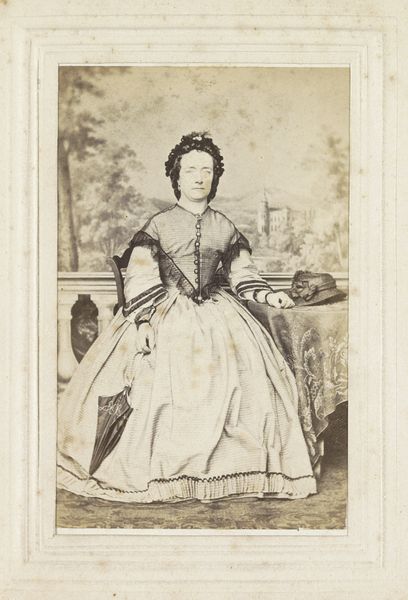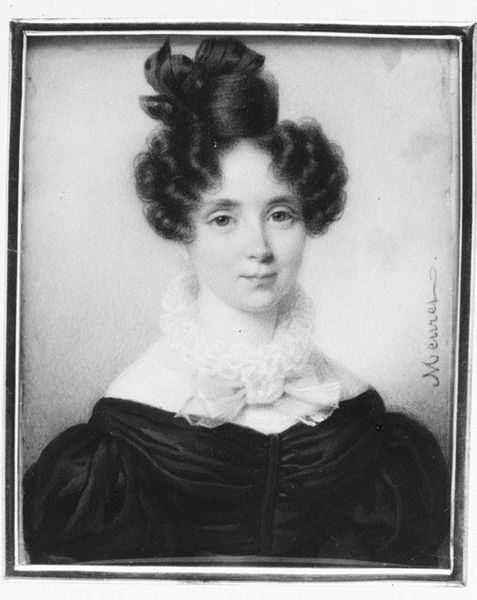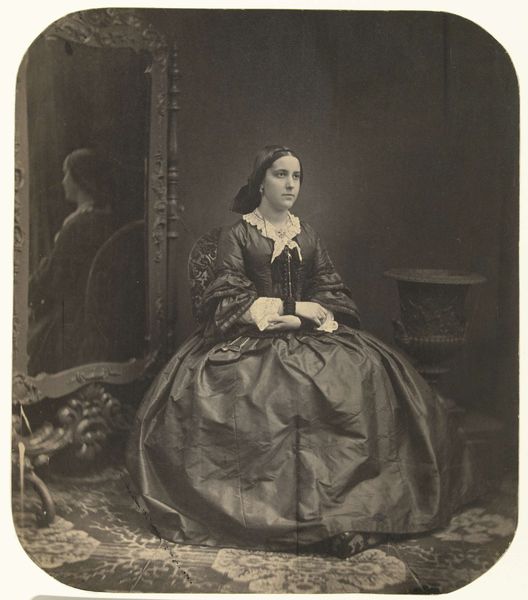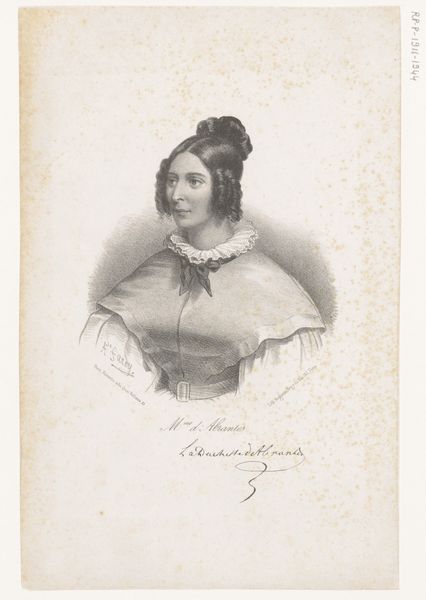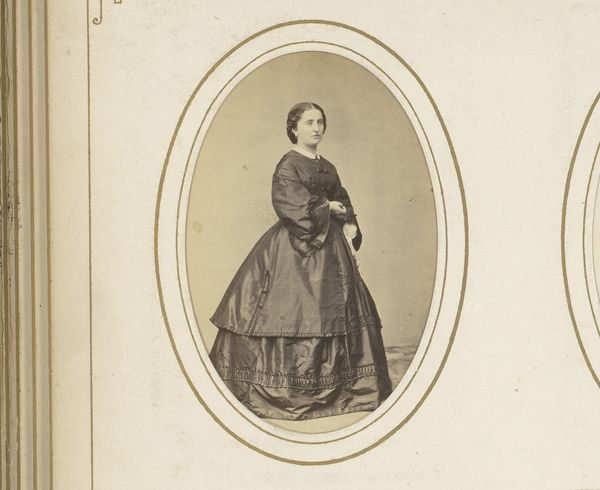
Dimensions: height 127 mm, width 111 mm
Copyright: Rijks Museum: Open Domain
Curator: I'm immediately struck by the stillness. The muted tones amplify the solemnity of her gaze. Editor: Precisely! This is "Portret van Elisa Beer-Oppenheim," taken by Eduard Isaac Asser around 1854-1855. It's a gelatin-silver albumen print currently residing here at the Rijksmuseum. Look at the formality of the presentation; photography at this time was really about cementing social status. Curator: I see echoes of the Dutch Masters in her composed demeanor, and yet photography introduces something different: an imprint of reality, a claiming of likeness. Editor: That’s a good observation! The sitter's garments indicate the complexities and pressures of feminine presentation and the socio-economic role played by appearance during the mid-19th century. Do you notice how the plaid patterns and lace speak to established societal conventions, but the gaze defies sentimentality? Curator: Her gaze transcends its era. Her tightly clasped hands radiate the complexities of her psychological state, I feel an air of determination, not fragility. Is that a ring? It possibly carries marital significance. Editor: Undoubtedly. In many ways, it shows that photographs became a form of democratization. Previously, painted portraits were the exclusive domain of the elite. Photography afforded access to likeness to an emerging bourgeois class, expanding the political economy of representation itself. But beyond the expansion of the marketplace, it’s still an interesting commentary on power relations— who had the money to commission the photographs? Curator: An excellent point. And despite the spread of portraiture, there’s still the performative aspect and its manipulation of identity, and even what has remained with us over time...The survival of images through decades reshapes memories through nostalgia and creates shared visual language over generations. This object is clearly a piece of heritage today. Editor: That’s how these early photographs start reflecting what society valued—and what it continues to value or has even lost. These early photographs can also teach us so much about ourselves. Curator: So, the image of a single woman ends up mirroring a vast array of collective sentiments. It prompts a really fruitful investigation of individual memory meeting broader historical contexts. Editor: Right. A moment captured in a laboratory continues to open so many social, cultural and intimate questions, right here in the museum, many years after the portrait has been realized.
Comments
No comments
Be the first to comment and join the conversation on the ultimate creative platform.
